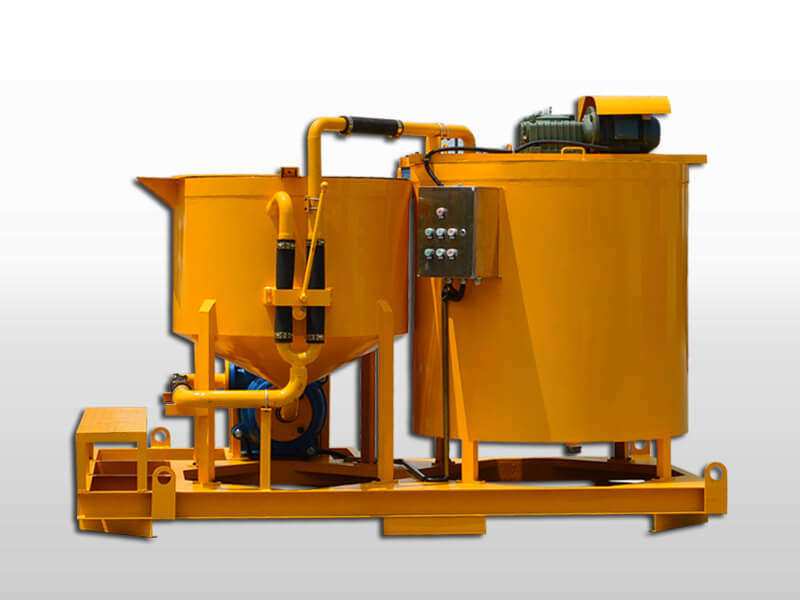process involved in bentonite grouting
Bentonite Vs. Neat Cement Grout | Hunker
Bentonite grout and neat cement grout both are used to plug abandoned wells as part of a decommissioning process. Because of its swelling properties, bentonite is sometimes added to cement grout. Because these grouts have to be pumped down holes, they are more liquid or fluid than grouts used for laying tiles and other building uses.
Bentonite Grout Suppliers, all Quality Bentonite Grout
Process Involved In Bentonite Grouting. Contact Supplier. Favorites Compare. 3 YRS . Liuzhou Lingqiao Prestressed Machinery Co., Ltd. Supplier Trade Assurance Contact Details Video. Best selling high pressure grouting injection pump quality bentonite grout plant. Country/Region: …
Grouting – Baroid
Grouting is the process of placing an effective seal in a borehole. The sealing agents used are generally known as grouts. To be effective they must be easy to put in place and must have a very low permeability to limit the migration of contaminants to the subsurface.
Bentonite Grout Wholesale, Grout Suppliers
WELL GROUTING Introduction Grouting is the placement of a sealing material such as neat cement or bentonite into the annular space between a well casing and the borehole created during well construction. Grouting is an effective and necessary measure for the protection of public health and ground water quality.
Grouting Isn’t “Just Grouting” – Water Well Journal
.com offers 141 bentonite grout products. About 15% of these are pumps, 7% are other construction machinery, and 6% are bentonite. A wide variety of bentonite grout options are available to you, such as free samples.
WAC 173-160-381: – Washington
Sep 11, 2016· Part 1: Choosing which kind of grout to use. By Gary Shawver, MGWC. Grouting of water wells has been pretty much a standard in most areas of the United States for the last 25 years or so. Some areas have had grouting laws and regulations in place longer than others, but for the most part, grouting of water wells is a routine part of well drilling.
SEALING WELL CASING | American Ground Water Trust
As the sealing material is placed, the existing well tile may be encapsulated into the seal material. If concrete, neat cement grout, bentonite, bentonite slurry, or neat cement is used to seal below the static water level in the well, the material shall be placed from the bottom up by methods that avoid segregation or dilution of the material.
A Guide to Plugging Abandoned Wells — Publications
Properly sealing a well casing involves filling the annulus with a material that will stop water from flowing down the side of the casing. The process of filling the annulus is called grouting. Grouting typically involves pumping cement and/ or bentonite into the annular space starting at the bottom of the casing and filling back up to the surface.
Cement-Bentonite » Slurry Walls » Geo-Solutions | Soil and
No more than 2 or 3 feet of dry bentonite chips ever should be in the well during the filling process. Wetting dry bentonite after the entire well has been filled is not recommended. Because of the ease of application, chipped bentonite is the recommended material for plugging abandoned wells less than 10 inches in diameter.
What Is Foundation Grouting? | Hunker
Properties of Hardened Cement-Bentonite Backfill. The properties of interest for most CB slurry walls are strength and permeability. CB slurry has a relatively high water content and because of this there are more water-filled voids than in a Soil Bentonite backfill.
Cement (Slurry) Grouting | Hayward Baker
A grout curtain is a type of foundation grouting used on dams. A series of holes is drilled in multiple rows along the base of the dam. Grout is injected into these holes to form a waterproof curtain. This prevents water seepage through the base of the dam, which can damage the dam’s integrity.
Vertical Impermeable Barriers (Cutoff Walls) | Geoengineer.org
Cement grouting, also known as slurry grouting or high mobility grouting, fills pores in granular soil or voids in rock/soil, with flowable particulate grouts. The grout particle size and void size must be matched properly to allow the cement grout to permeate.
Bentonite – Wikipedia
Jan 29, 2013· Field Setup/Process Involved. As previously mentioned there are three main types of jet grouting, single, double and triple rod. Single rod jet grouting injects only grout into the soil and is capable of creating columns that can be up to 1.2 m in diameter in granular soils and up to 0.8 m in diameter in cohesive soils.
Bentonite (/ ˈ b ɛ n t ə n ʌ ɪ t /) is an absorbent aluminium phyllosilicate clay consisting mostly of montmorillonite.It was named by Wilbur C. Knight in 1898 after the Cretaceous Benton Shale near Rock River, Wyoming.. The different types of bentonite are each named after the respective dominant element, such as potassium (K), sodium (Na), calcium (Ca), and aluminium (Al).
























